The 5 Most Badass Musical Instruments Ever Built
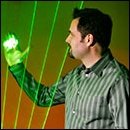
Whether it's rock and roll with its blistering solos, classical with its ominous overtones, or jazz with its black people, music is already pretty damn cool. The only way it could get cooler? These:
The Great Stalacpipe Organ

'Lithophone' is the fancy music term for 'thing that hits rocks with sticks.' And to think our second grade teacher called that 'anger issues' (we were clearly just musically inclined, Mrs. Davis). The Great Stalacpipe Organ is the world's largest lithophone, and it is located inside of a cave. Wait, did we say "located inside of"? Sorry, we meant "built out of."
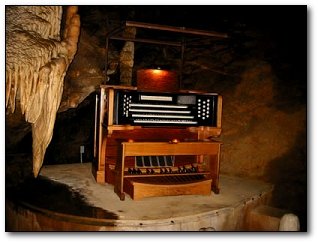
The organ is comprised of 37 stalactites scattered over 3.5 acres of the Luray Caverns in Virginia. When a key is pressed on a central console, a mallet strikes one of many gargantuan stalactites scattered throughout the cave, producing a specific note which resonates throughout the entirety of its 64 acres.
The instrument was conceived by Pentagon employee Leyland Sprinkle, in part to make up for his hilariously precocious name. Appropriately, Sprinkle's brainchild came about after damaging the brain of his child. In a trip to the caves in 1956, Leyland's son Robert hit his head on a stalactite, and instead of phoning the paramedics or dropping to his knees to curse a cruel and uncaring God, Sprinkle became fascinated by the sound of the vibrating rocks. He then spent the next 3 years shaving stalactites to get them perfectly in pitch, and the next 50 years presumably driving away the invading Molemen with his giant earth organ. They have notoriously sensitive ears, you see. That's Moleman Anatomy 101 right there.
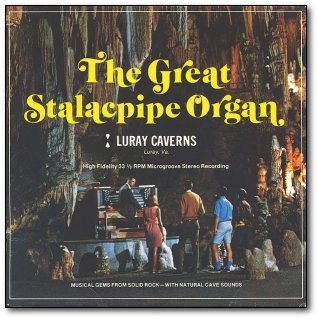
"You see, kids, if the music ever stops, our surface world will surely fall beneath their savage claws."
The Nano Guitar

Everybody knows the guitar: It's been famously played by everyone from douchebags unsuccessfully trying to impress girls, to even bigger douchebags very successfully trying to impress girls. The only way it could be more badass is if you scaled that bastard up, and ravaged the eardrums of Squares with your skyscraper-sized axe. Or you could take the opposite tack: Build a fully functional guitar...about the size of a red blood cell. And that's been done. This is the Nanoguitar, developed by Dustin Carr of the Cornell Nanofabrication Facility in 1997:
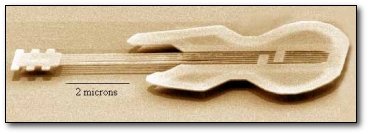
"Yeah, sweetheart. The guitar is just in my blood, you know? Literally. There's like eight thousand tiny guitars in my veins."
Its entire length is about one-twentieth of the diameter of a piece of hair, and each is string only 100 atoms wide. Unfortunately, that means it's so small that the music it plays is inaudible to human ear, and that takes a little away from its coolness: Guitars aren't bitchin' because they're so quiet and peaceful. But it makes up cool points in other ways, like the method for using it: This guitar is played by firing lasers at the strings. So you can clumsily pick out the Bond theme on the Nanoguitar, then turn right around and use your pick to kill him.
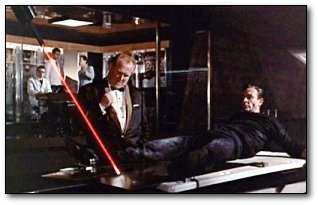
"Talk? No, Mr. Bond, I expect you to lay down a bitchin' solo."
There is some talk that scientists might be able to use the Nanoguitar to measure bacteria, which might, in turn, lead to faster and more accurate diagnoses but we're not getting into that. Because rock & roll ain't about being useful, baby. Don't try to tame them; they're Nanoguitarists.
Lego Harpsichord

A harpsichord is an early precursor to the piano that lacked the ability to produce notes of varying volumes. And that's already pretty cool: It's like a piano suffering from Voice Immodulation Disorder. This one is a bit different, though, in that is made entirely out of Legos: The world's most frustrating building material. Every year, countless children have struggled with the intricate instructions and easily losable materials that come with every Lego set, fumbling through buckets of pieces trying to find a two-peg hinge until they start crying in frustration and their older brother comes in to beat them up for it.
And that's the sort of drama that comes along with a little 100 piece Lego set. The Lego Harpsichord is not little. The Lego Harpsichord weighs 150 lbs, it has 61 keys and its strings exert 325 lbs of tension. It took the incredibly patient Henry Lim two years to build, and is comprised of over 100,000 Lego pieces ( or approximately 20 Millennium Falcons).

At Cracked, we measure everything in Millennium Falcon Units
Obviously, the Lego Harpsichord is not mass produced, which means the only way to get your hands on one is to build it yourself. Word of warning though: The designer originally set about to build a piano, but quit because it was too hard. He had to settle for a harpsichord instead.
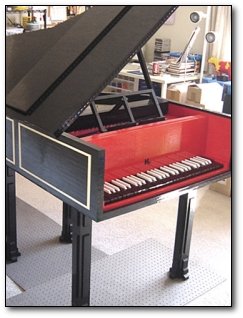
Man, we don't even have the patience to fail at this project.
The Laser Harp

Just a normal harp ... except instead of strings, it has fucking lasers. If you could kill Bond with your Nanoguitar pick, you'd use the Laser Harp you'd to wipe out the rest of MI6 in one hellish afternoon of fire, blood, and inappropriately mellow tunes.
It's a simple mechanism: Whenever a laser is broken, a corresponding note is produced. And while the notes you can play are limited by the number of lasers, there are an infinite number of ways to break those lasers - digital manipulation, dance, object interaction, or just the controversial but always crowd pleasing 'dong-pluck'.
There are three different types of laser harp: Framed, image recognition, and infinite. Framed harps look exactly like a regular harp, if you ignore the lasers (they are rather noticeable, however, in that they are lasers). Image recognition harps forgo the visual lasers in favor of invisible ones, and are largely purchased by people who never learned what fun was. Infinite Lasers are, well...we'll let this description from laser harp enthusiast Steve Holby describe them: "a fan of beams shoots up from the floor into the night sky."
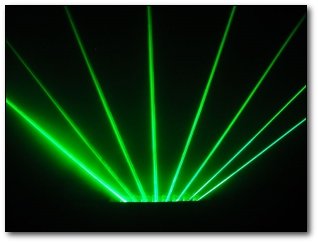
Laser Fan: The only objectively bitchin' kind of fan.
Holby used to sell plans online so you could build your own, but they were taken down. Now your only options are to get him to build a custom model just for you, or else design and construct your own. But you're spending at least part of your day reading Cracked; the odds say you're not the most 'productive' human being around.
The Zeusaphone

The Zeusaphone's name is a play on "Zeus" and "Sousaphone" -- the former being a mortal-bonin' Greek god, the latter being a large, round ball that quivers in response to fun (we don't actually know what a sousaphone is. It was from Cat in the Hat, right?) The Zeusaphone is basically just an ordinary Tesla coil that has been harnessed to play music. Here's the Mario theme song on one:
That's right: We have not only officially tamed, but completely humiliated lightning.
You can get your own from Zeusaphone.com because they rent out lightning guitars on the internet now. If you've ever needed a cue to believe you're living in the future, that last sentence was it. Your choices for rental are the Z-26, which produces 26 inch electrical arcs, mainly used for smaller venues; the Z-45, which produces 45 inch arcs, mainly used in expos and larger shows; or the Z-80, which produces 84 inch arcs, mainly used to threaten congress if they don't give in to your demands promptly enough.

Wikipedia tells us that the Zeusaphone works by discharging sparks that are "digitally modulated so as to produce musical tones. The high-frequency signal acts in effect as a carrier wave; its frequency is significantly above human-audible sound frequencies, so that digital modulation is able to reproduce a recognizable pitch. The musical tone results directly from the passage of the spark through the air. The flexibility of the sound is limited by the fact that the solid-state coil produces square rather than sinusoidal waves; but simple chords are possible" So in other words: Magic.
It's magic made by wizards.
For more examples of art and science colliding in a badass explosion, check out 5 Works of Legitimate Made Science Passed Off as Art.